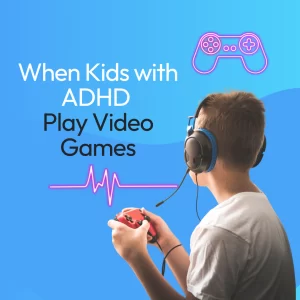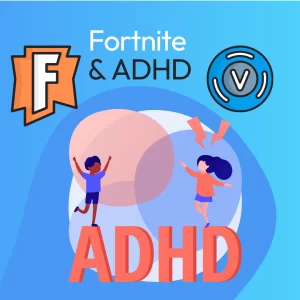Kids trying to improve their popularity in school also increase the risk they’ll be harassed by peers. The higher they climb the school social ladder, the greater the risk they’ll be bullied. Once they reach the pinnacle, though, peers stop picking on them.
In a study published this week in the American Sociological Review, researchers from University of California-Davis and Pennsylvania State University find that gains in social status not only increase the likelihood of being bullied, but also magnify the severity of the consequences of being picked on.
The finding does not diminish the impact of already-recognized bullying of children who are socially vulnerable, such as those with body image problems, delayed physical development or who don’t have friends. But bullying of more popular kids has not been well-recognized, and prevention programs tend to overlook it, said Robert Faris, lead author and associate professor of sociology at UC-Davis.
That type of “targeted” bullying features kids acting out against rivals. Faris said the more kids care about becoming popular, the more likely they are to engage in such behavior. He and co-author Diane Felmlee, professor of sociology at Penn State, call this sort of bullying “social combat.”
“Competition for status is at the root of a lot of aggression,” Faris said.
Girls are more likely to be targeted than boys. Felmlee thinks that may be because girls less often retaliate physically, so they’re a slightly easier target than boys.
In schools where boys and girls do not mix socially much, students who do have multiple opposite-sex friends are less likely to be bullied.
Most kids are not bullies nor bullied, but about 30 percent experience some aspect of it. Other studies have also found bullying numbers around 25 to 30 percent.
The study design
The researchers used data from a survey of adolescents at 19 public schools in North Carolina, focusing on 4,214 eighth-, ninth- and tenth-graders surveyed in 2004-05. The aggression questions were asked at Faris’ request, Felmlee said.
They calculated popularity by mapping friendships within a school. For victimization, they asked students to name up to five schoolmates who picked on them and five they picked on, ignoring teasing and focusing on serious events. They matched the aggressor and victim lists: If Y said he bullied Z and Z said he was bullied by Y, it counted. They did not use the term bullying, Felmlee said, because people have limiting ideas of what it means. Instead, they looked at degrees of aggression.
Students may say someone creates drama or has a beef, “but they don’t think of it as abuse,” Faris said.
“A lot of these kids don’t like to think of themselves as victims, so they use different terminology. But these kinds of behaviors cause raised anxiety, depression, anger and led to social marginalization. They decrease a kid’s attachment to school. It’s problematic, whatever you call it.”
The researchers also looked at results, such as anxiety, depression and school attachment, plotted on a scale. Anger was measured by frequency. They slotted victims in terms of social position, measured by friendships.
The findings
Those who moved up the school social ladder from the middle to the 95th percentile were apt to be victimized as they climbed. Those who made it to the top “found a safe perch,” Faris said. The top 5 percent in popularity are typically not bullied. They also don’t bully, he said.
Being bullied seems to spread through social circles. When one friend is bullied, another is more likely to be, as well. Girls were bullied significantly more and were also more anxious and depressed, less happy with their appearance and less attached to school, compared to boys. But they were also less angry, more likely to be involved in school social networks and less likely to be loners.
Victims and aggressors are often close status rivals, Felmlee said. A girl may be a rival for a place in a social club or for a boyfriend. Boys are more likely to be physical, while girls are more apt to gossip or ostracize.
The more popular a bullying victim is, the more the bullying results in anger, depression, anxiety and social marginalization, the study found.
Faris said that may be the result of feeling like they have more to lose, since achieving social standing was hard work. It could also be that they don’t expect it, so it hurts more. It’s also likely, he added, that kids harassed their whole lives have lived with more depression and anxiety, but they may find aggression slows down in high school. “They end up ignored, I think,” he said.
Reactions vary. Kids who are socially isolated feel more anxiety and depression when they’re victimized, but they are not more angry or less attached to school than their classmates. Adolescents who are unhappy with their looks were more anxious and depressed, but not more angry or isolated. They were more attached to school. Those who lag in development are more angry, but also more attached to school and less depressed.
In background information, researchers reported similar findings among students at an elite public high school in New York. They believe the findings would be quite universal in schools.
Some people think there’s no harm in aggression toward popular kids. That’s not true, Felmlee said. “We find that the consequences are costly for those kids as well and some bullying prevention programs may overlook them. For some who have never been bullied before, it’s a huge deal.”
Faris said bullying-prevention programs often single out bullying of students who are more stereotypical subjects. Those who want to impact bullying may want to consider “status competition,” too.
“Until we have programs and policies that take into consideration that kids are being rewarded for this, that it’s socially useful for them, we are probably not going to make a whole lot of headway,” he said. “There are different causes of bullying and this is just one, but it has been neglected.”
Email: [email protected], Twitter: LoiscoBy Lois M. Collins, Deseret News National EditionPublished: Monday, March 31 2014 10:05 p.m. MD
In a study published this week in the American Sociological Review, researchers from University of California-Davis and Pennsylvania State University find that gains in social status not only increase the likelihood of being bullied, but also magnify the severity of the consequences of being picked on.
The finding does not diminish the impact of already-recognized bullying of children who are socially vulnerable, such as those with body image problems, delayed physical development or who don’t have friends. But bullying of more popular kids has not been well-recognized, and prevention programs tend to overlook it, said Robert Faris, lead author and associate professor of sociology at UC-Davis.
That type of “targeted” bullying features kids acting out against rivals. Faris said the more kids care about becoming popular, the more likely they are to engage in such behavior. He and co-author Diane Felmlee, professor of sociology at Penn State, call this sort of bullying “social combat.”
“Competition for status is at the root of a lot of aggression,” Faris said.
Girls are more likely to be targeted than boys. Felmlee thinks that may be because girls less often retaliate physically, so they’re a slightly easier target than boys.
In schools where boys and girls do not mix socially much, students who do have multiple opposite-sex friends are less likely to be bullied.
Most kids are not bullies nor bullied, but about 30 percent experience some aspect of it. Other studies have also found bullying numbers around 25 to 30 percent.
The study design
The researchers used data from a survey of adolescents at 19 public schools in North Carolina, focusing on 4,214 eighth-, ninth- and tenth-graders surveyed in 2004-05. The aggression questions were asked at Faris’ request, Felmlee said.
They calculated popularity by mapping friendships within a school. For victimization, they asked students to name up to five schoolmates who picked on them and five they picked on, ignoring teasing and focusing on serious events. They matched the aggressor and victim lists: If Y said he bullied Z and Z said he was bullied by Y, it counted. They did not use the term bullying, Felmlee said, because people have limiting ideas of what it means. Instead, they looked at degrees of aggression.
Students may say someone creates drama or has a beef, “but they don’t think of it as abuse,” Faris said.
“A lot of these kids don’t like to think of themselves as victims, so they use different terminology. But these kinds of behaviors cause raised anxiety, depression, anger and led to social marginalization. They decrease a kid’s attachment to school. It’s problematic, whatever you call it.”
The researchers also looked at results, such as anxiety, depression and school attachment, plotted on a scale. Anger was measured by frequency. They slotted victims in terms of social position, measured by friendships.
The findings
Those who moved up the school social ladder from the middle to the 95th percentile were apt to be victimized as they climbed. Those who made it to the top “found a safe perch,” Faris said. The top 5 percent in popularity are typically not bullied. They also don’t bully, he said.
Being bullied seems to spread through social circles. When one friend is bullied, another is more likely to be, as well. Girls were bullied significantly more and were also more anxious and depressed, less happy with their appearance and less attached to school, compared to boys. But they were also less angry, more likely to be involved in school social networks and less likely to be loners.
Victims and aggressors are often close status rivals, Felmlee said. A girl may be a rival for a place in a social club or for a boyfriend. Boys are more likely to be physical, while girls are more apt to gossip or ostracize.
The more popular a bullying victim is, the more the bullying results in anger, depression, anxiety and social marginalization, the study found.
Faris said that may be the result of feeling like they have more to lose, since achieving social standing was hard work. It could also be that they don’t expect it, so it hurts more. It’s also likely, he added, that kids harassed their whole lives have lived with more depression and anxiety, but they may find aggression slows down in high school. “They end up ignored, I think,” he said.
Reactions vary. Kids who are socially isolated feel more anxiety and depression when they’re victimized, but they are not more angry or less attached to school than their classmates. Adolescents who are unhappy with their looks were more anxious and depressed, but not more angry or isolated. They were more attached to school. Those who lag in development are more angry, but also more attached to school and less depressed.
In background information, researchers reported similar findings among students at an elite public high school in New York. They believe the findings would be quite universal in schools.
Some people think there’s no harm in aggression toward popular kids. That’s not true, Felmlee said. “We find that the consequences are costly for those kids as well and some bullying prevention programs may overlook them. For some who have never been bullied before, it’s a huge deal.”
Faris said bullying-prevention programs often single out bullying of students who are more stereotypical subjects. Those who want to impact bullying may want to consider “status competition,” too.
“Until we have programs and policies that take into consideration that kids are being rewarded for this, that it’s socially useful for them, we are probably not going to make a whole lot of headway,” he said. “There are different causes of bullying and this is just one, but it has been neglected.”
Email: [email protected], Twitter: LoiscoBy Lois M. Collins, Deseret News National EditionPublished: Monday, March 31 2014 10:05 p.m. MD



